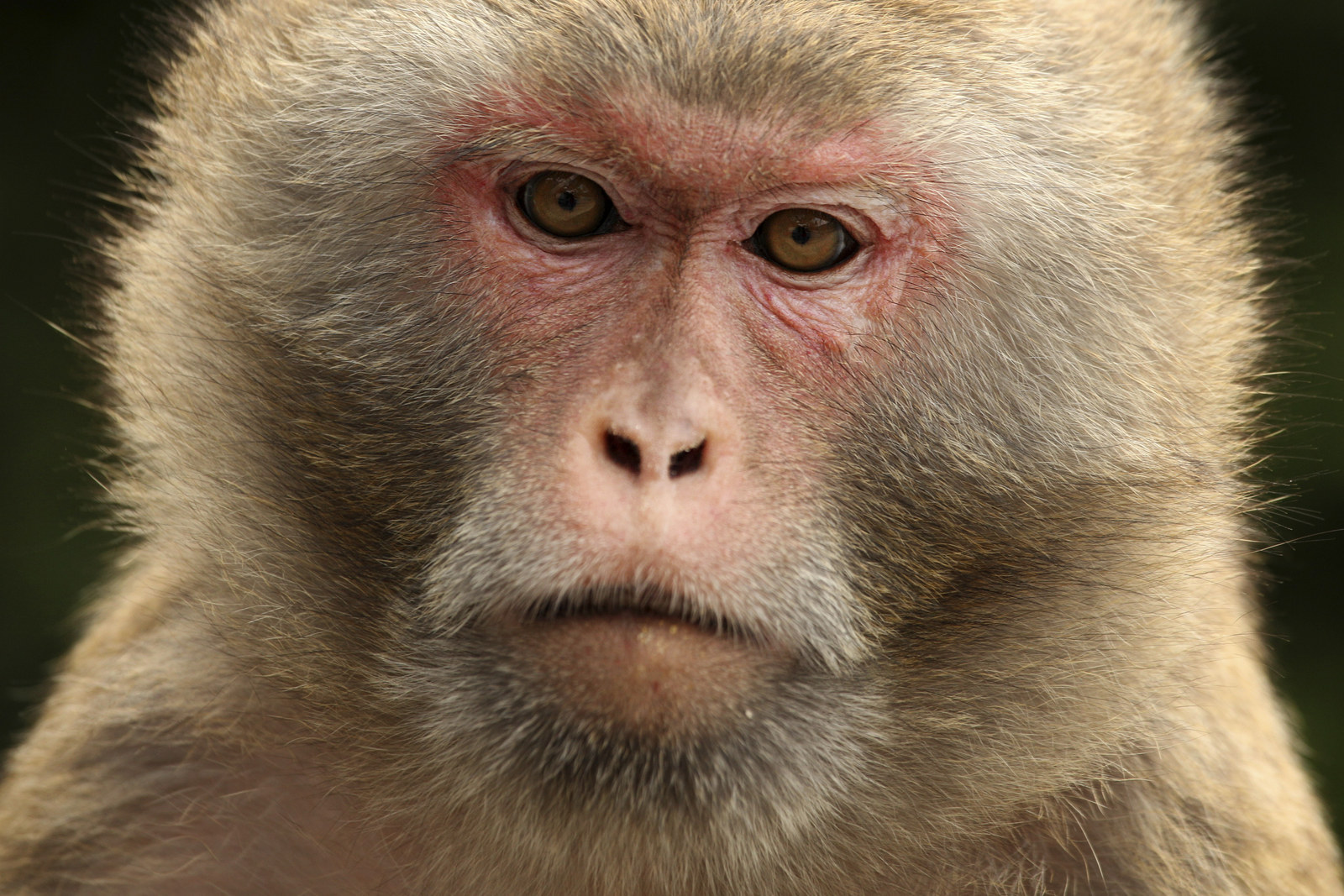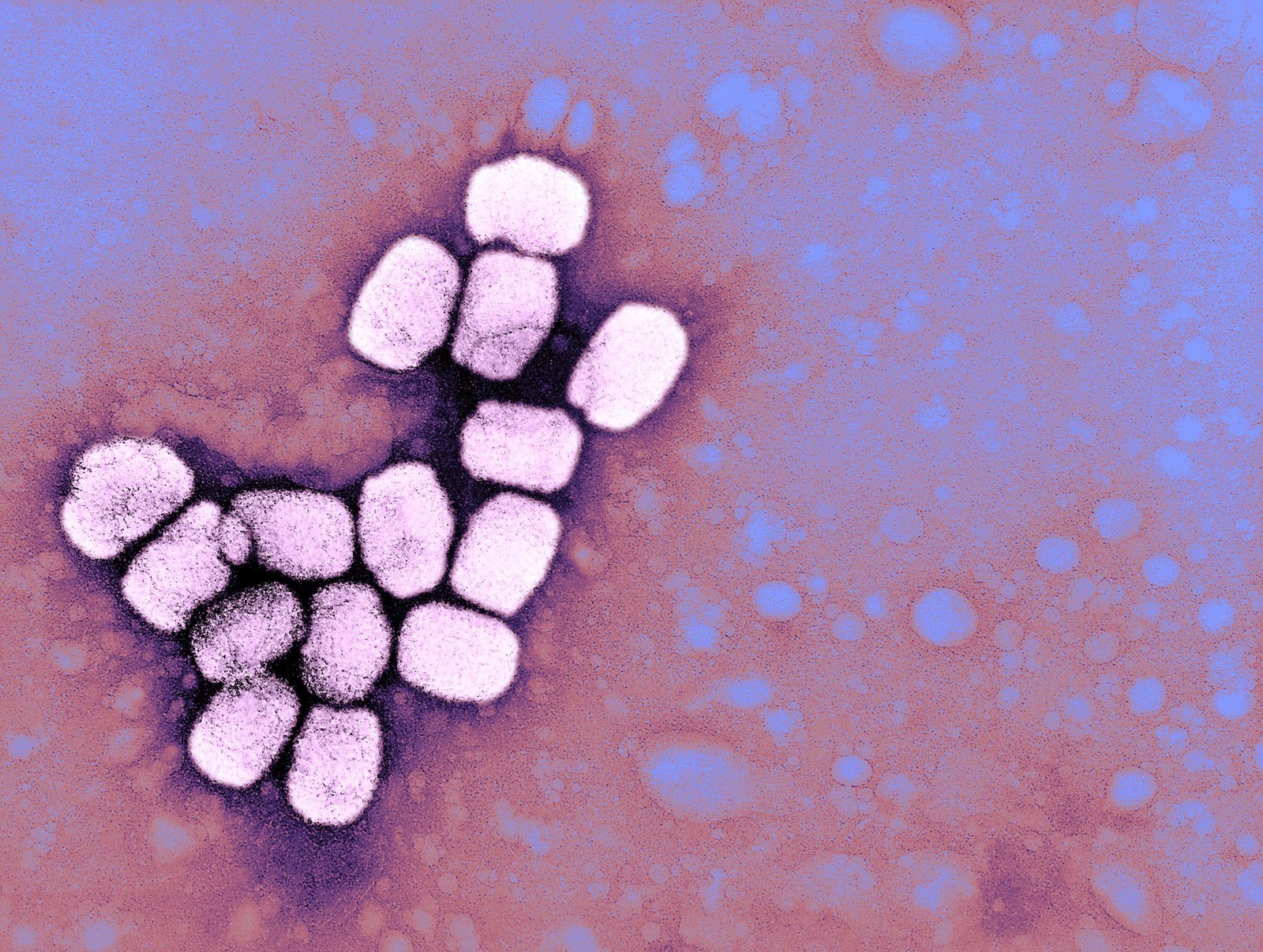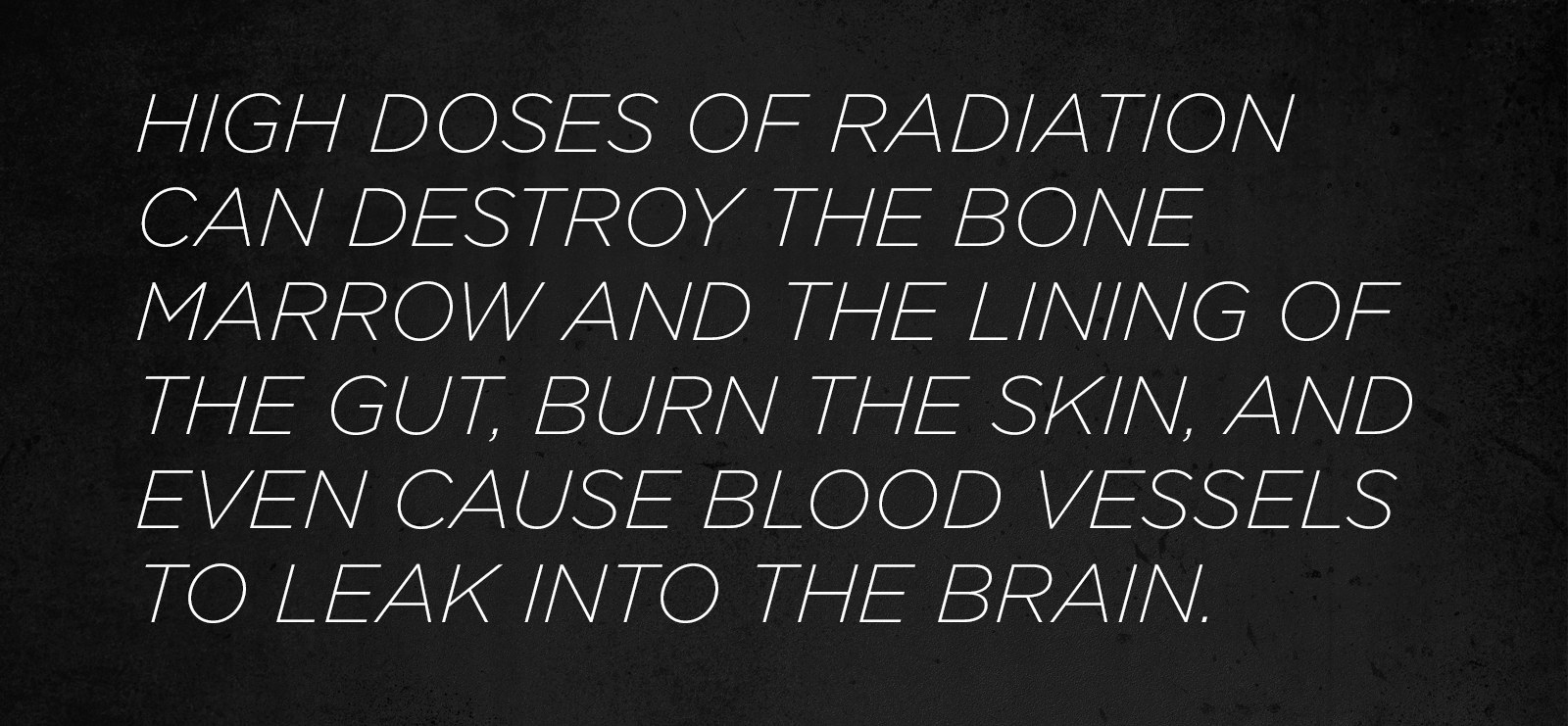They are the unsung heroes of the war on terror — or its hidden innocent victims, depending on your point of view.
They have been deliberately infected with deadly bacteria and viruses, including plague, anthrax, Ebola, and smallpox. Some have been dosed with nerve agents. Others have been lethally irradiated. Many died during these experiments, or had to be euthanized after becoming severely ill — some found collapsed in their cages, others suffering from seizures or hemorrhaging into their guts.
They are research primates — mostly rhesus macaques, long-tailed macaques, and African green monkeys — acting as our surrogates in experiments designed to develop and test new drugs and vaccines against biological, chemical, and radiological weapons.

In 2001, starting just a week after 9/11, two senators and several journalists received letters containing deadly anthrax spores. Five people died from the exposure, and 17 were sickened. Since then, the U.S. government has poured billions of dollars into developing drugs and vaccines to fill the Strategic National Stockpile — an enormous medicine cabinet that will be opened in the event of mass exposure to biological or chemical weapons or the detonation of a nuclear device or “dirty” bomb.
This massive research investment, which is unique to the United States, has been steeped in controversy. Government scientific advisers have criticized it for slow and erratic progress. And earlier this year, a USA Today investigation revealed a series of embarrassing incidents in which deadly pathogens were accidentally released from secure containment, putting scientists — and in some cases, the public — at risk.
The U.S. government’s push in biodefense has also taken a heavy toll on research monkeys — a cost that has not been publicly tallied until now.
BuzzFeed News has calculated the number of primates used each year for what the USDA calls “Column E” experiments, in which animals experience pain or distress that is not fully alleviated with painkillers, tranquilizers, or other drugs. Because monkeys are emotionally complex creatures that are thought to experience suffering similarly to how we do, such experiments are especially controversial.
The number of primates used in these ethically fraught experiments has more than doubled since 2002, averaging more than 1,400 per year since 2009, according to a BuzzFeed News analysis of a USDA database called the Animal Care Information System.
According to federal regulations, research involving animals must be reviewed by an institution’s animal care committee. Scientists aren’t supposed to withhold drugs that could ease animal suffering unless this would interfere with the results of the research. And any research institution running Column E experiments must provide justification for the work in an annual report sent to the USDA.
BuzzFeed News has reviewed around 100 justification reports from more than two dozen labs, as well as scientific publications from labs using large numbers of Column E primates. These documents clearly show that the increase in monkey experiments involving pain or distress has been driven by the effort to develop countermeasures against biological, chemical, and radiological weapons.
Number of Primates Used in "Column E" Experiments
If not for this boom in biodefense research, the number of primate experiments would almost certainly have been in decline.
In 2001, half a dozen multinational drug companies — which have mostly remained on the sidelines of biodefense research — accounted for just over half of the 649 primates used in Column E experiments. But by 2014, big pharma’s reported tally of Column E primates was down to just 29 animals.
These companies declined to discuss the details of their primate research, but industry observers note that the reduction may have been achieved, in part, by shifting monkey experiments to other countries, including China.
The BuzzFeed News analysis surprised several experts — even those who knew that the federal government’s programs in biological, chemical, and radiological defense had required the approval of ethically controversial experiments.
“Wow, that’s a lot of monkeys,” said Joanne Zurlo of the Johns Hopkins Bloomberg School of Public Health, who studies alternatives to animal experimentation. “It’s quite disturbing.”

Is the suffering of all these monkeys justified? Some experts consulted by BuzzFeed News argued that the research is necessary if we want to have drugs and vaccines to protect against a devastating terrorist attack. But monkeys are not always the best model for whether a drug or vaccine will work in people. Even when they are, some researchers have deep misgivings about the large numbers of monkeys that have been used in studies that condemn many to severe illness and death.
At the heart of this debate is the “Animal Rule,” a regulation adopted by the FDA in 2002 to provide a mechanism for approving drugs that could protect against biological, chemical, and radiological weapons — where running studies that expose people to the actual threat would clearly be unethical.
The rule states that animal experiments can be accepted as evidence that a drug works if the results are “clearly related to the desired benefit in humans, generally the enhancement of survival or prevention of major morbidity.”
This wording, with its focus on death and severe illness, has inevitably promoted experiments that involve animal suffering. But some experts question whether such experiments are giving the best scientific results.
Drugs Approved Under the Animal Rule
“Rather than consuming an entire animal or using an animal as a crude screen, a more educated and targeted approach may yield better data,” Steven Niemi, director of the Office of Animal Resources at Harvard University, told BuzzFeed News. For example, he would like to see more studies in which monkeys and other animals are used to obtain detailed information on how a drug or vaccine works, rather than just recording whether they get sick or die.
Most research into biodefense drugs and vaccines is funded by the Department of Health and Human Services — through the National Institute of Allergy and Infectious Diseases (NIAID) and the Biomedical Advanced Research and Development Authority (BARDA) – and the Department of Defense.
While these agencies have poured money into labs across the country — many of them at major universities — three institutes have dominated the most ethically contentious primate experiments: the U.S. Army Medical Research Institute of Infectious Diseases (USAMRIID) at Fort Detrick, Maryland, the Lovelace Respiratory Research Institute in Albuquerque, New Mexico, and the Battelle Memorial Institute in Columbus, Ohio.
Since 2002, these three institutions have collectively used more than 6,400 Column E primates. In 2014, they accounted for almost two-thirds of the monkeys used in these experiments.
Institutions That Perform "Column E" Primate Experiments
USAMRIID was once the center of the U.S. military’s offensive bioweapons program. After that was shuttered in 1969, the institute became the nation’s leading biodefense lab, and today works on a variety of threats including Ebola and anthrax. (USAMRIID was also the workplace of Bruce Ivins, the anthrax researcher who was the FBI’s prime suspect for the 2001 attacks, and who killed himself in 2008 as the feds closed in.)
Battelle manages laboratories for the U.S. government and conducts contract research, mostly related to defense. In recent years, its primate experiments have included tests of treatments for anthrax and exposure to cyclosarin nerve gas.
Lovelace evolved from a lab that studied the effects of inhaling radioactive materials and toxic chemicals — and also ran medical tests used to help select the first U.S. astronauts. Its Column E monkey experiments have included tests of drugs to treat plague and exposure to high doses of radiation.
The big three labs all declined to respond to specific questions about their primate research.

USAMRIID referred queries to the Pentagon. “The Department of Defense complies with federal laws and regulations regarding the use of animals,” DOD spokesperson Eric Badger told BuzzFeed News by email.
Lovelace responded with a statement issued through a public relations firm, which similarly stressed the lab’s regulatory compliance. It also said that “Lovelace Respiratory Research Institute has spent the last decade answering the nation's and the world's needs to combat and treat catastrophic health threats.”
Battelle refused interviews with its scientists, and spokesperson Katy Delaney declined to discuss the details of individual experiments.
“We’re not comfortable having that debate in the media,” Delaney told BuzzFeed News. “We have talented people, veterinarians, who care about the animals,” she added. “And they do their best to alleviate pain and discomfort.”
But Column E experiments, by definition, involve pain or discomfort. In studies to develop a system to test drugs for anthrax, for instance, Battelle scientists got long-tailed macaques to inhale lethal doses of the bacterium and then recorded symptoms including difficulty breathing, vomiting, and diarrhea. Most of the monkeys in the untreated control group died.
Facilities running research on monkeys are inspected at least once a year by the USDA to check that they comply with federal regulations and are following protocols for each experiment agreed upon with local animal use committees. Federal labs such as USAMRIID are exempt from these inspections, however.
After a routine inspection in March, Lovelace was cited for failing to provide monkeys with the care that was supposed to be delivered — including intravenous fluids, Tylenol for fever, and antidiarrheal drugs.

Whether monkeys provide the best guide to how a drug or vaccine will work in people depends on the condition in question.
For certain diseases, notably Ebola, they are clearly the best option. Although it is possible to infect various species of rodents with the Ebola virus, only monkeys show the full range of symptoms seen in people — including the excessive internal and external bleeding that frequently leads to death.
Developing drugs and vaccines against Ebola, which is on the U.S. government’s list of potential bioweapons, has been a top priority for USAMRIID. As Ebola raged in West Africa earlier this year, a vaccine that had recently been tested on long-tailed macaques at USAMRIID was one of two candidates rushed into human clinical trials in the affected countries. Supporters of the Animal Rule point to this as a vindication of primate experiments conducted in the name of biodefense.
“The next time there is an Ebola outbreak, hopefully there is going to be a vaccine,” Olaf Schneewind, a microbiologist at the University of Chicago who studies plague and anthrax, told BuzzFeed News.
Schneewind, meanwhile, has been involved with rodent and monkey tests of experimental vaccines against pneumonic plague, a virulent form of the disease caused by inhaling droplets containing Yersinia pestis bacteria. This is the major threat from weaponized plague, and if untreated can quickly kill.
The problem with using rodents, Schneewind explained, is that it’s fairly easy to protect them from the disease — which means that a vaccine that works in rodents might not work in people. It is much harder to protect monkeys from pneumonic plague, Schneewind said. So he believes the FDA should set a high bar and demand evidence from primate experiments that a plague vaccine can prevent fatal disease, before approving it for human use.

But monkeys don’t always provide the most reliable data. This lesson was learned with alarming consequences in 2006, in safety tests of an immune system protein called TGN1412, intended as a treatment for rheumatoid arthritis. No problems had emerged in tests on long-tailed macaques. But when TGN1412 was given to six healthy men at a hospital in London, it triggered a life-threatening inflammatory reaction. The men suffered damage to multiple organs, and one was held in intensive care for several months.
There have been no similar safety scares in biodefense research. Still, for some potential bioweapons, scientists disagree on whether monkeys are the best animals in which to test whether a drug a vaccine will work. The most prominent split is between two companies developing drugs to treat smallpox: Chimerix of Durham, North Carolina, and SIGA Technologies of New York.
Stocks of smallpox virus are known to be held at only two labs, the CDC in Atlanta and the Russian State Research Center of Virology and Biotechnology in Koltsovo, Siberia. So for practical reasons, SIGA and Chimerix began to study macaques infected with a related virus, monkeypox.

But there was still a problem. For both smallpox and monkeypox, a very high dose of virus, usually delivered directly into a vein, is needed to establish a reliably lethal infection in monkeys. And the disease then looks rather different than human smallpox, lacking a lengthy incubation period in which the virus spreads slowly through the body.
Monkeys with this unnatural infection are a poor choice for testing human smallpox drugs, virologist Mark Buller of Saint Louis University told BuzzFeed News. He holds stock in Chimerix and has worked with both companies, testing their drugs in mice with mousepox, a related disease caused by the ectromelia virus.
Chimerix had further problems using monkeys because its smallpox drug, brincidofovir, is broken down too quickly in macaques. So the company abandoned primate experiments, and now hopes to convince the FDA to approve the drug based on tests in rabbits with rabbitpox and mice infected with the ectromelia virus. SIGA, however, continued testing its smallpox drug, tecovirimat, in macaques infected with monkeypox or smallpox.
Neither drug has yet been approved by the FDA, but that isn’t necessary for them to enter the Strategic National Stockpile — even unapproved drugs can be administered under an “emergency use authorization” in the event of a bioterrorist attack. Indeed, SIGA has already delivered hundreds of thousands of treatment courses of tecovirimat to the stockpile.

Among researchers working on treatments for people exposed to large doses of radiation, the debate isn’t about whether monkeys will provide useful data. Instead, it centers on whether experiments in which monkeys are lethally irradiated can be ethically justified, given the suffering involved.
The only radiation countermeasure approved so far under the Animal Rule is a drug called filgrastim, manufactured by the biotech giant Amgen of Thousand Oaks, California. To show that it worked, the NIAID backed an experiment at the University of Maryland at Baltimore in which 46 rhesus macaques were given a potentially lethal dose of radiation.
High doses of radiation can destroy the bone marrow and the lining of the gut, burn the skin, and even cause blood vessels to leak into the brain. The goal was to see whether filgrastim, which stimulates the production of white blood cells from damaged bone marrow, boosted survival. It did: After 60 days, 21% of the monkeys treated with filgrastim had died, compared to 59% of those not given the drug.
In this experiment the animals were given supportive care, including antibiotics, painkillers, and even blood transfusions. Still, some researchers are opposed to experiments like this, in which large numbers of monkeys must be lethally irradiated.

One of those critics is Chandan Guha, a radiation oncologist at the Montefiore Medical Center in New York, who is working to develop treatments that would repair the damage from radiation using stem cells. Although he accepts that some monkey experiments may be necessary, he would like to see smaller numbers used, with a greater focus on studying the mechanisms of how experimental treatments work — to help interpret results obtained from other animals. “We should use a bare minimum of primates,” Guha told BuzzFeed News.
Richard Hatchett, now a BARDA deputy director, helped design the Baltimore experiment while at the NIAID. He told BuzzFeed News that the NIAID funded this study of monkey survival because the FDA had demanded it. But he said the work was halted, using fewer monkeys than had been anticipated, as soon as it became clear that the drug was working.
“We are very sensitive about the need to minimize harm and suffering to any animals used in this research,” the University of Maryland at Baltimore said in a statement released to BuzzFeed News. “After long and careful consideration, we believe we are taking the most beneficial approach for long-term public health around the world.”

Although the number of primates being used in biodefense research has not previously been tallied, in 2011 the National Academy of Sciences weighed in on the animal experiments being used by the Department of Defense. In its report, an expert academy panel co-chaired by Harvard’s Niemi urged the Pentagon to “encourage efforts to replace nonhuman primates as the animal of choice in biodefense research.”
The Academy report also recommended that potential medical advances be “weighed against the duration and severity of animal pain and distress” and suggested that experimental animals should be given more of the additional care — including fluids, painkillers, and other drugs — that human patients would likely receive in the event of a real attack.

Leaders of the federal government’s biodefense programs told BuzzFeed News that efforts are being made to use fewer monkeys, as humanely as possible. BARDA Director Robin Robinson said that some forms of radiation injury, such as skin burns, may be better studied in other animals, such as pigs.
“It may be that we don’t have to go into nonhuman primates,” Robinson said. And having consulted with the FDA, BARDA’s effort to push SIGA’s smallpox drug to approval is now using only rabbits and mice.
Providing more supportive care for monkeys is also being discussed, Michael Kurilla, who heads the NIAID’s biodefense program, told BuzzFeed News. But he warned that in some cases this can make it harder to spot the difference being made by an experimental drug — requiring more animals to be used.
In tests involving deadly viruses and bacteria, Kurilla added, giving more supportive care could put lab staff in danger. “More handling of infected animals does increase the risk,” he said.
To get a sense of whether the largest labs are refining their methods, BuzzFeed News asked Niemi to review recent biodefense research papers involving monkeys from scientists at USAMRIID, Lovelace, and Battelle. In most cases, he found little discussion of supportive care provided to the animals. “I’m not encouraged that the practice is being widely considered,” he said.
Niemi agreed that protecting lab staff from infection is crucial, but noted that monkeys in these experiments are often already fitted with intravenous lines and monitoring equipment. So it should be fairly easy to provide them with fluids and other drugs, he said. “We do have the hardware for these kinds of things with nobody having to be in the room.”

As experts debate the pros and cons of future monkey experiments, another big question hangs over the federal effort in biodefense: After putting monkeys through all of this testing, will the drugs and vaccines actually work in people?
Thomas Hartung, who heads the Center for Alternatives to Animal Testing at Johns Hopkins University, is skeptical about the Animal Rule’s ability to predict whether therapies will work, pointing to the many drugs that disappoint in human clinical trials after showing promising results in animal tests. “95% of the things that go into humans fail,” Hartung told BuzzFeed News.
There is still no clear alternative to relying on some form of animal experiments where it is not possible to run a human clinical trial, however. The FDA is backing research to develop “human-on-a-chip” technology, using cells grown in flexible polymer channels pumped with fluids to simulate the behavior of human organs on a miniature scale. But the technology is still in its infancy. “We’re not there yet,” Kurilla said. “Those systems are simply not ready for primetime.”
So for the time being, monkeys will remain on the front lines of the war on terror. But do so many have to be sacrificed, and does their suffering need to be so intense? Now that the numbers involved have been revealed, Zurlo of Johns Hopkins believes it’s time for a long, hard look at whether all of the experiments are justified.
When the goal is national defense, it’s often easy to argue that the end justifies the means, Zurlo told BuzzFeed News. “But that doesn’t make it right."
